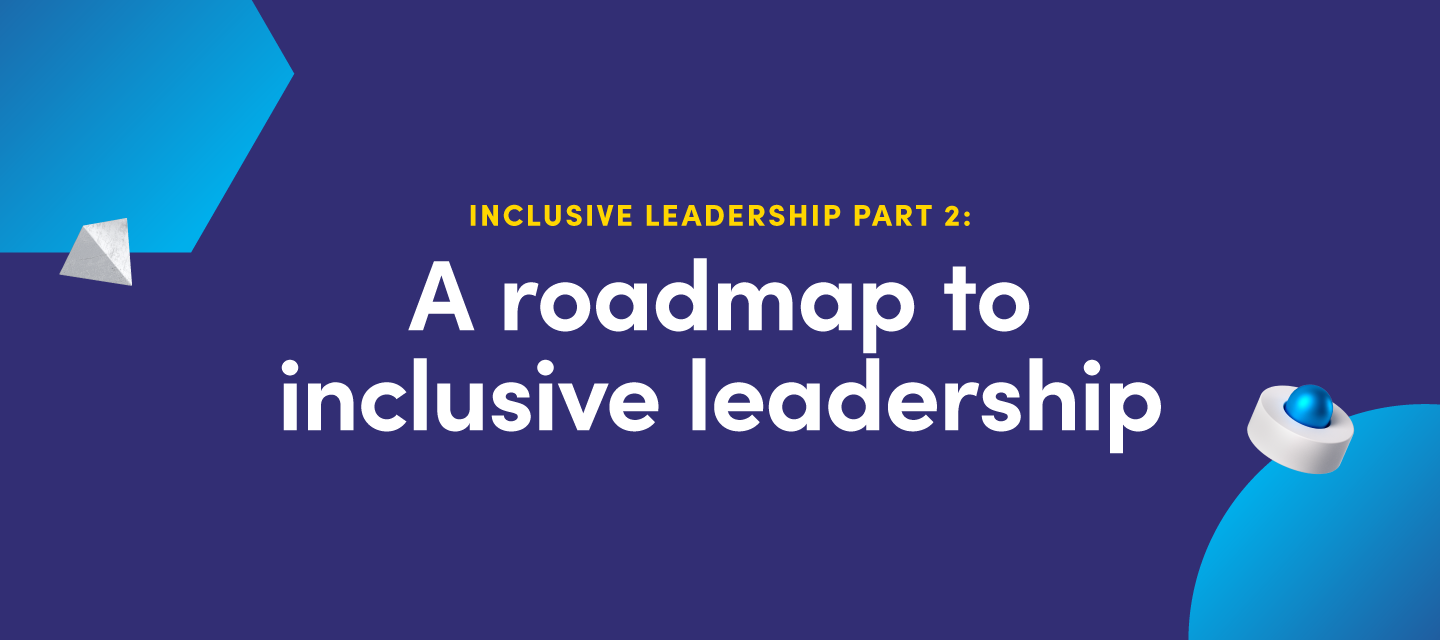What the greatest leaders in history got wrong
Who pops into your head when you think of a good leader? Maybe it’s a manager you had or a politician you admire. Or even a character from your favorite movie.
Whoever it is, they lead with a specific style. And there are a lot of styles to choose from—transformational leadership, servant leadership, situational leadership. The list goes on.
No matter the style, this person excelled at taking a group of people and maximizing their potential as a whole. This is probably why you consider them to be great. But it’s also where they likely could have improved.
Leaders have traditionally seen the people they lead as one, big group in need of motivation. Inclusive leadership is the exception. Inclusive leaders find the best working style for individuals. Then they create a working environment that allows each personality to shine within the team.
As the benefits of inclusive leadership are better understood, people managers and whole organizations are transitioning from traditional leadership styles with a group-first mentality to a more individual-first approach.
Why inclusive leadership? Why now?
The evolution from traditional leadership styles to inclusive leadership has a lot to do with the way our workplaces and communities are changing. These areas of our lives are becoming more diverse every day. There are more people from different cultural backgrounds and who identify with different religions, genders, generations, and working styles.
This shift has created the need for a different style of leadership that takes these diverse people and their unique motivations and backgrounds into account to create happy, high-performing teams.
How to make a business case for inclusive leadership
An idea might make a lot of sense, but that doesn’t mean it’s easy to put into practice. Inclusive leadership is no different. That’s because change is hard. Our regular leadership styles are familiar, comfortable, and (usually) get results. That makes changing behaviour difficult.
The challenges of change get a lot easier to manage when the reward is worth the growing pains. That’s why inclusive leadership can’t just be ‘the right things to do’. It has to make business sense. Luckily, it does.
Research tells us diverse, inclusively-led teams have a big business impact (check out my last post for some stats). The key is to tie those benefits to the goals of your company and team.
For example, your company’s goal might be to make more profit on every item it sells. Every department contributes to that goal, whether it’s marketing, production, or maintenance.
Find out how your team contributes. If you work in maintenance, production, or operations, you might contribute by keeping assets running at peak performance.
You can then align that higher-level purpose with a core benefit of diverse, inclusively-led teams. For instance, diverse teams arrive at solutions faster because they deal with less trial-and-error than homogeneous groups.
Here’s how that concept looks in action: A particular, critical machine might be breaking down, running at a lower capacity, or creating lots of waste all the time. You might not know why. A diverse team can help you tackle this problem from several angles and arrive at an effective answer faster. That means fewer wasted resources, less money spent on production, and more profit.
What to do on day one of your inclusive leadership journey
It takes a while to build a diverse business with an inclusive culture that everyone participates in. It’s easy to get overwhelmed along the way. That’s why it’s important to start small. Begin with yourself and your own team, find ways to take immediate action, and build momentum.
Here is a three-step framework you can use to start transitioning to inclusive leadership:
-
Look at the six characteristics of an inclusive leader. Which ones are your strengths and which ones can you be better at?
-
Pick one area you could be better at and pick one situation where you could work to improve it, like inclusive collaboration in a weekly meeting or courage in monthly review sessions.
Using the 2-and-2 technique to bolster inclusive collaboration
Here’s how the 2-and-2 technique works: Pick a regular meeting where ideas are collected. When an idea you like is presented, choose two people to discuss why it’s a good idea. Also, choose two other people to offer alternative ideas. This balances any biases and creates space for diverse opinions.
- Track what is working and what isn’t. Have honest conversations with team members about these changes to gauge benefits and gaps. Get feedback in a one-on-one setting. Then use these insights to fine-tune your approach. Check out my first post in this series for some tips on measuring your progress in this area.
The road to success starts with one step
Inclusive leadership doesn’t have a finish line. The work never ends. But that doesn’t mean you won’t see lots of big wins along the way. And you won’t be starting from scratch either. There are characteristics in every leader that are inclusive.
Here are a few takeaways from this post to help you on this journey:
-
Build a business case for inclusive leadership for both your manager and those who report to you. It will make getting buy-in from everyone much easier.
-
Take any opportunity to talk about diversity and inclusion at your business, whether it’s a conversation with managers, directors, and executives, or a change you think is needed to make a process more inclusive.
-
Analyze your management style according to the six characteristics of inclusive leadership. Pick one to improve and start small.
Stay tuned for my next post where I’ll dive deeper into the characteristics of an inclusive leader and how to develop each one. And register now to join me at a roundtable on May 5, from 2-3 pm EST, for a deep dive into inclusive leadership and some practical techniques you can use at your workplace.







